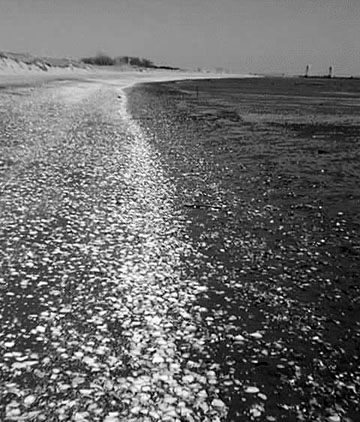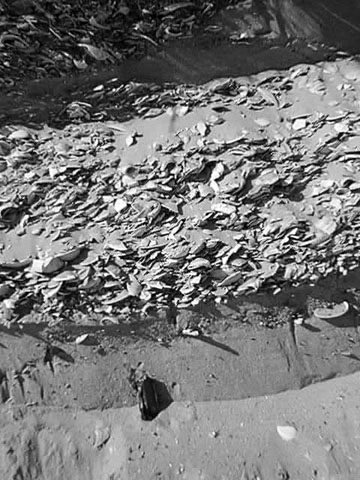71. Plumb Beach (Gateway National Recreation Area)
Plumb Beach is part of Gateway National Recreation Area and an access point to the shore along the outer bay area of Rockaway Inlet (see Figure. It is accessible from a parking area along the eastbound lane of the Belt Parkway about a mile east of Sheepshead Bay in Brooklyn. Plumb Beach was a very popular bathing beach during the heyday of Brooklyn prior to the 1960s, but local urban development and pollution took its toll, and the beach waned in popularity. Garbage on the beach, primarily litter derived from street runoff in southern Brooklyn, is a continuing issue, although great strides have been made to curtail the problem.
Plumb beach is a convenient location to study beach processes, tidal mud flats (exposed during the lowest tides), and the dynamics of shore dunes (Figure 189). The environment isn't completely natural, having been totally modified during the construction of the Belt Parkway, and land filling in and around Sheepshead Bay. However, local Brooklyn residents should appreciate the park, particularly for its shore dunes. It is essentially the borough's only line of defense against catastrophic flooding of a major storm or hurricane. Evidence of the power of storms can be seen by examining the shell deposits that crop out high in the dunes (Figure 190). These deposits formed during a series strong nor'easters during the early 1990s.
 |
| Figure 189. A wrackline of broken surf clam shells along mud flats exposed at low tide along Plumb Beach in Brooklyn. Beach and shore dunes are on the left |
 |
| Figure 190. Shore erosion has exposed shell hash accumulations high in the shore dunes at Plumb Beach. Dates garbage amongst the shells indicate that these storm deposits formed during nor'easters in the early 1990s. (Four inch Swiss army knife for scale). |
In the past, Plumb Beach was one of the best locations to observe the mating ritual of horseshoe crabs (Limulus polyphemus). This prehistoric-looking arthropod has remained essentially unchanged for more than 200 million years. These creatures migrate great annual distances up and down the Atlantic coast, but return to their site of birth to mate on the beach during the highest tides of the full moon in the spring (typically late May to earliest June). Unfortunately, horse crab populations are becoming severely threatened throughout the region. A move in the early 1990s to replenish sand to Plumb Beach severely disrupted the habitat conditions for the horseshoe crabs, and they abandoned use of the beach. Hopefully people will learn about their needs and behavior so that they can return and prosper here for another 200 million years!
| Return to Our Transient Coastal Environment. |